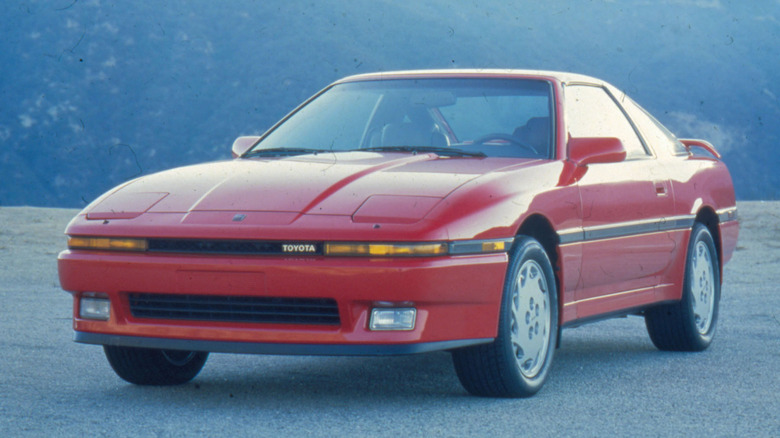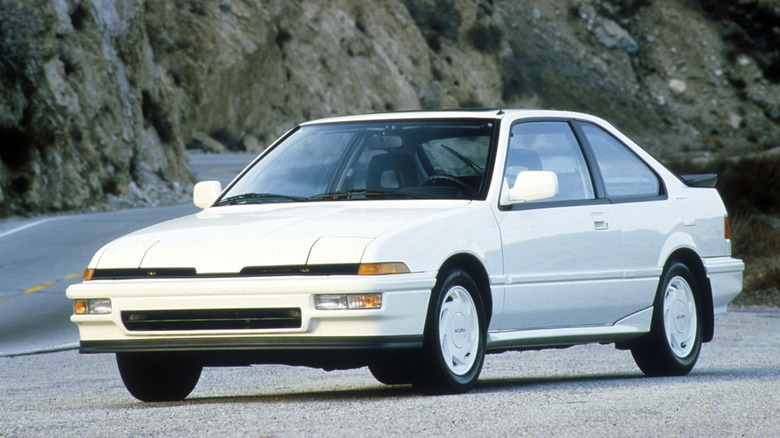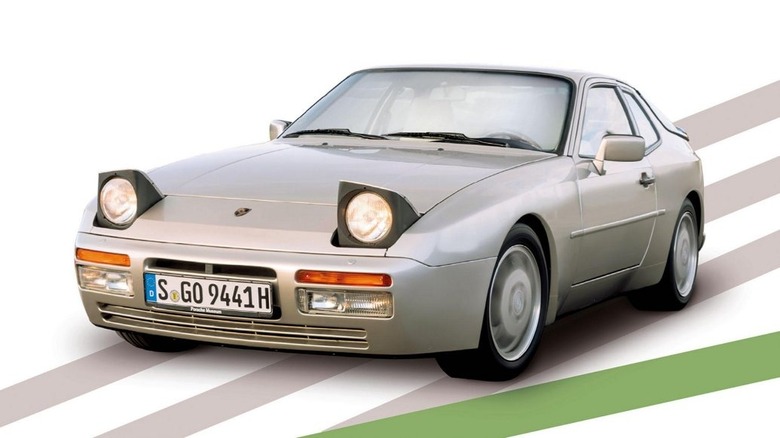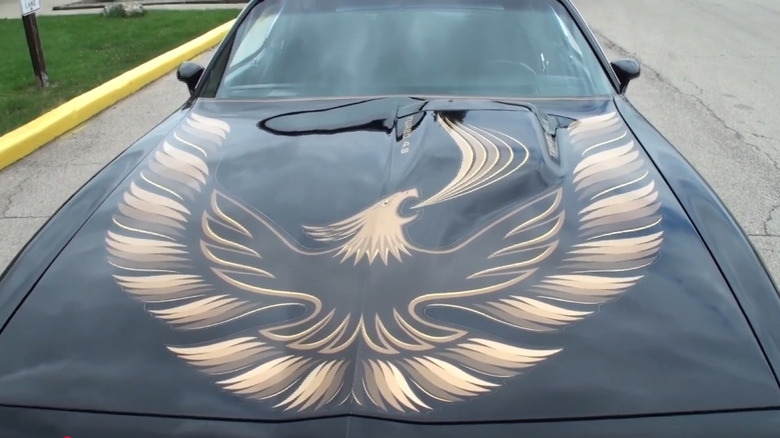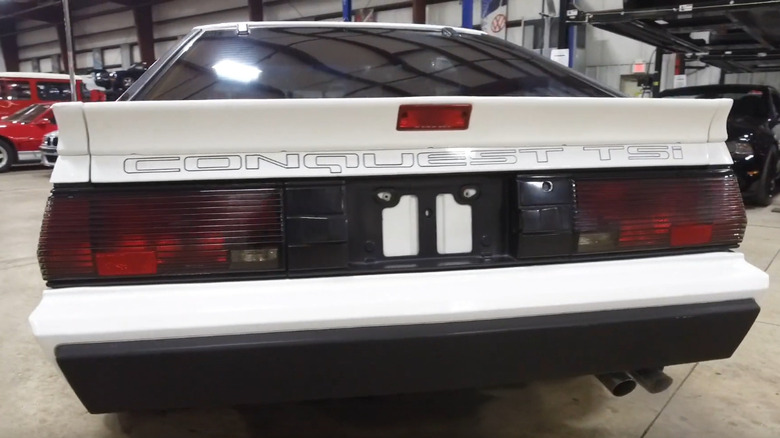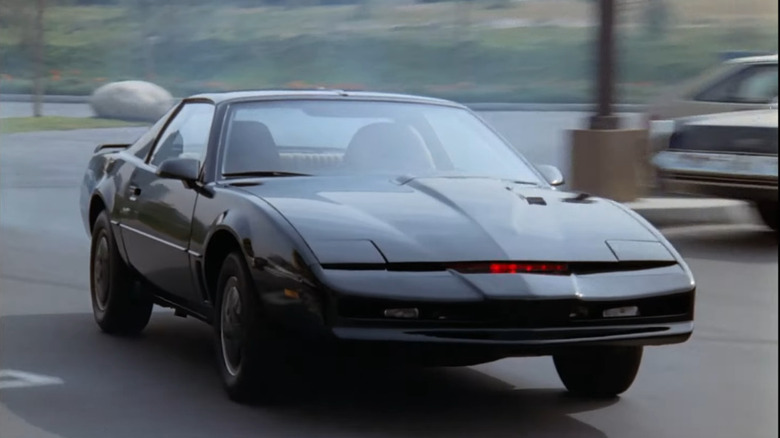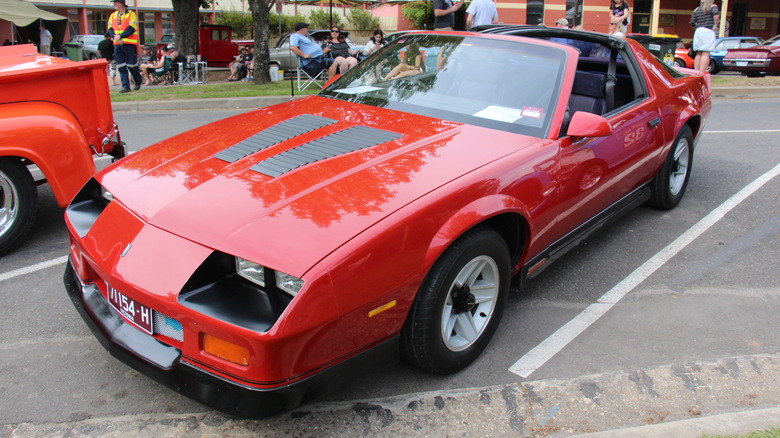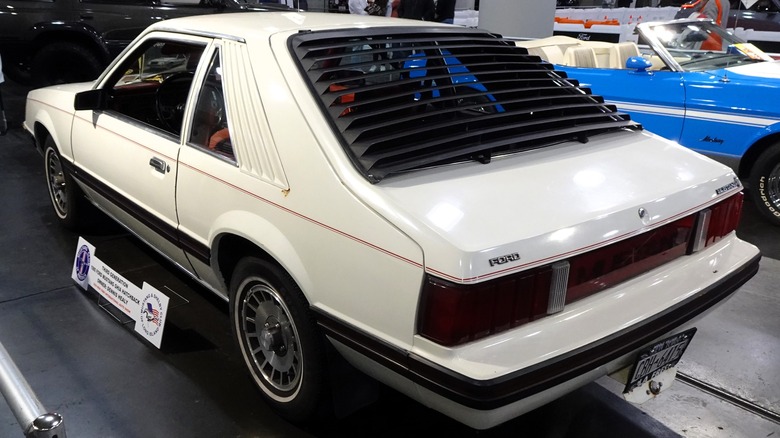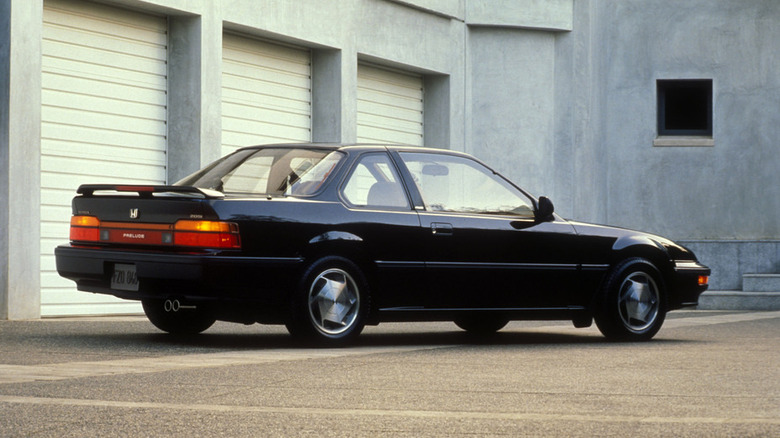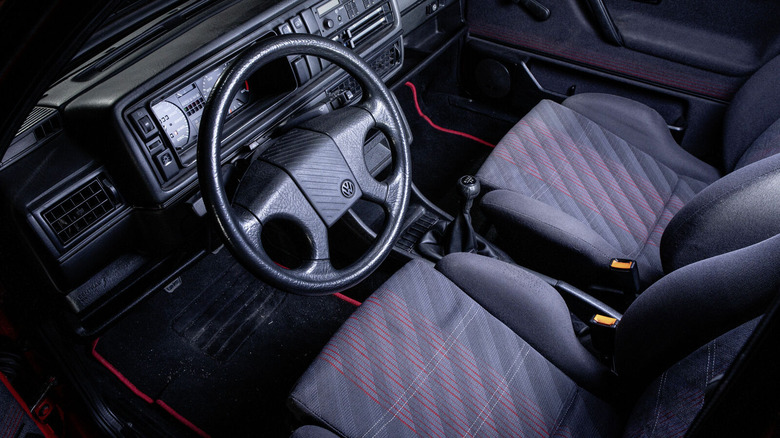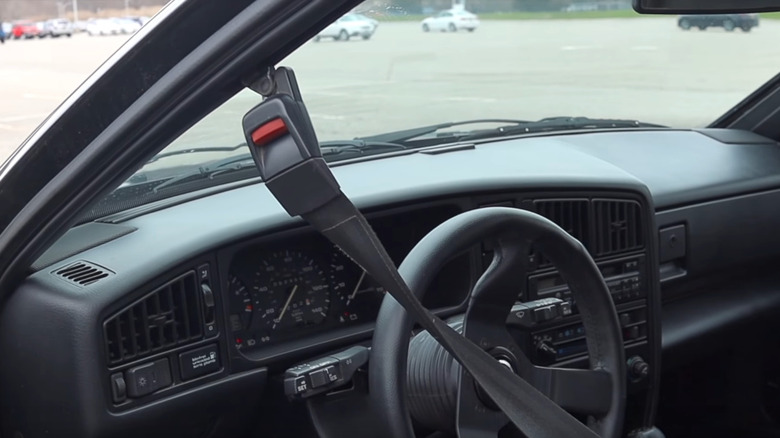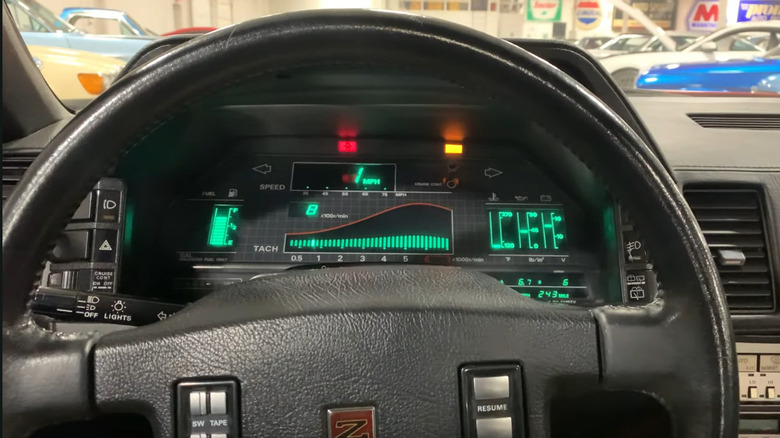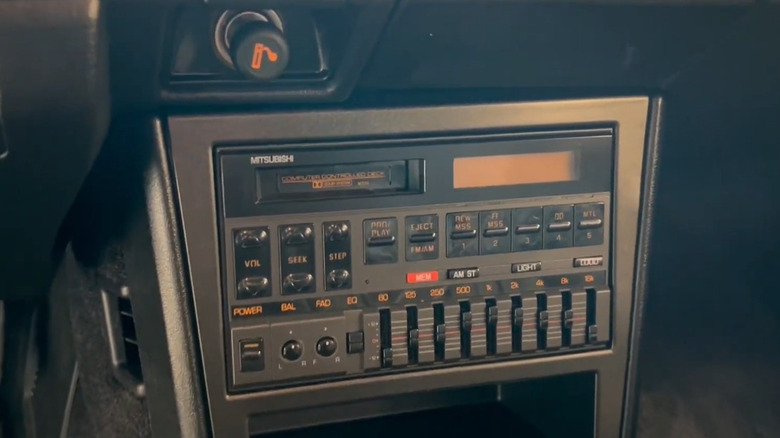13 Car Fads We Miss From The 1980s
The '80s. A time of big hair, bigger shoulder pads, and the absolute boldest cars to ever hit the pavement. It was a golden era for car culture, where automotive designers weren't afraid to take risks. The result? Every car ended up part fashion statement, part sci-fi prop, and all unapologetic attitude.
Now, were all these trends genius-level innovations? Heck no. Some were truly ahead of their time. Others? Well, let's just say they were gloriously, wonderfully questionable. But even the quirkiest ideas had a charm you just couldn't deny. Designers were basically throwing everything at the wall to see what would stick, and you know what? A lot of it was just plain awesome.
So where did all this radness go? A few fads were retired by the fun police (you know, for safety), some just fell out of fashion, and others were simply out-tech'd by the next big thing. But stroll through any car show today, and you'll see them. Those flashes of '80s genius, still looking cool and turning heads after all these years. Let's go through the things we miss most about '80s car culture.
Wedge-shaped designs
If the '80s had a signature silhouette, it was the wedge. Designers were absolutely obsessed with making cars look fast, and apparently, the best way to do that was to make them shaped like a doorstop, a really, really cool doorstop. And subtle? Not even a little. This was aggressive geometry, all dramatic angles that screamed, "I'm from the future, and the future is pointy." Cars sat low and wide with front ends that looked like they were perpetually diving forward, giving off serious spaceship-meets-sports-car energy.
The wedge shape wasn't just about looks, though. There was actual science behind it (shocking, we know). That sloped nose and tapered rear were supposed to cut through wind resistance and make cars more aerodynamic. Did it work? Sometimes! Did it always look incredible? Absolutely. Consider icons like the Acura Integra, with its clean lines and "I mean business" stance, or the Pontiac Fiero, which looked like a mini exotic at an unbelievably affordable price tag. These cars had presence; they looked like they were going somewhere important, even if they were just sitting in your driveway.
Pop-up headlights
Oh, pop-up headlights. The feature that made every car feel like it had a personality — specifically the personality of someone who just woke up and is very, very excited to see you. Flip that switch, and your ride would practically say, "Showtime," with the headlights rising up like they'd been waiting for their moment to shine (because they were). It was theatrical. It was unnecessary. It was oh-so perfect. Pop-ups showed up on everything from affordable sports cars to legitimate supercars. The Porsche 944 rocked them. The Mazda RX-7 made them iconic. The Ferrari F40 wore them like a badge of honor. There was something undeniably cool about a car that had to prepare itself to see in the dark.
But alas, the party couldn't last forever. Ever the killjoy, safety regulations eventually said, "Hey, maybe having sharp, protruding lights isn't the best idea." And just like that, one of the coolest automotive features ever created was retired. Modern headlights? Sure, they're brighter, more efficient, and way safer. But do they flip up with that satisfying mechanical thunk that made you feel like a pilot prepping for takeoff? They do not, and that's a loss we're still mourning.
Vinyl graphics
If the '80s had a love language, it was loud vinyl graphics. Why settle for a plain, boring hood when you could slap a gigantic, glorious graphic on it for the whole world to see? Think racing stripes (even if the car never saw a racetrack), geometric patterns that looked like they escaped from your Trapper Keeper, and the crown jewel: the Screaming Chicken. That glorious golden firebird sprawled across the hood of the Pontiac Trans Am like it owned the whole dang highway.
But the Trans Am wasn't the only car getting the graphics treatment. The Dodge Omni GLH plastered "Goes Like Hell" on its sides with zero shame. The Mustang GT rocked those iconic lower-body stripes and proud "5.0" callouts. The Camaro IROC-Z had aggressive ground effects striping that wrapped around the whole car. Even the little VW GTI got in on the action with its signature red accent stripes. Fast forward to today, and all that's pretty much over. You get your choice of about 50 shades of meh, including the ever-popular "slap-clear-over-primer gray." Yawn.
Turbo hype and decals
If you had a turbo in the '80s, you didn't just have a turbo. Oh no, you made absolutely sure everyone within a five-mile radius knew about it. Turbocharged cars wore their forced induction like a badge of honor, with "TURBO" decals plastered across every available surface. The Chrysler Conquest TSi went all in with massive "CONQUEST TSi" lettering sprawled across the back like it was auditioning for a movie poster. The Porsche 944 Turbo? Proudly announced itself with sleek badging. Even cars with relatively modest turbo setups made sure you knew exactly what was under the hood, because if you didn't advertise it, did it even count?
This wasn't just about showing off (okay, it was mostly about showing off). Turbos were legitimately cool technology that made smaller engines punch way above their weight class. That little "TURBO" badge meant your car had something special going on — a secret weapon that could surprise unsuspecting muscle cars at stoplights. These days, turbos are everywhere, so common that half the four-cylinder crossovers on the road have them. But nobody's plastering "TURBO" across the back anymore, because now it's just ... expected.
Custom LED scanners
In the '80s, you didn't need to be a secret agent to have a high-tech car. You just needed a mail-order catalog and a dream. And that dream was almost always a bright, sweeping red light inspired by KITT, the true star of Knight Rider. With those lights, every outing felt like a mission, even if the mission was just to grab a slice of pizza. But don't kid yourself, these scanners did absolutely nothing practical. They didn't improve visibility. They didn't make your car faster. They didn't help you parallel park. But they did make your ride look awesome, and really, that was all the justification you needed.
The best part? You could put them on anything. Firebirds, Camaros, and even random economy cars got the treatment. If you had a grille and a dream, you could join the LED scanner club. Sadly, if you tried that today, you'd be out of luck. Modern traffic laws limit the colors of lights visible from the front of your car to white or yellow, which is practical, sure, but also kind of a buzzkill for anyone who dreams of having their own KITT moment.
T-Tops
T-tops were the perfect compromise for anyone who wanted the convertible vibe without committing to the whole folding-roof situation. Want to enjoy a sunny day? Pull those panels off and toss them in the trunk (or, let's be honest, carefully store them, as they were quite expensive to replace). Want protection from the elements? Pop them back on. You could even go half-and-half — driver's side off, passenger side on — for when you wanted fresh air but your passenger was being dramatic about their hair.
T-tops were basically a required item on the '80s cool-car checklist. It felt like every major sports car had them: the Corvette, the Nissan 300ZX, and especially the iconic duo of the Camaro Z28 and Firebird Trans Am. If your dream car was sporty and had a long hood, it almost certainly had a pair of removable glass panels on the roof. But it wasn't all sunshine and butterflies: Those panels were notorious for leaking during a car wash and made the chassis flex like a gymnast, but that was part of the charm. It was a hands-on, slightly risky relationship with your car.
Louvers
Nothing — and we mean nothing — said "I take my car very seriously" quite like louvers. These slatted covers looked like venetian blinds, and somehow, that was exactly the aesthetic people were going for. Louvers showed up everywhere in the '80s: rear windows, side windows, even quarter windows on hatchbacks. The Ford Mustang was practically synonymous with them, especially on those Fox Body models, where rear window louvers became as essential as the pony badge itself.
Were they functional? Well ... kind of. The slats were supposed to reduce glare and heat buildup by blocking direct sunlight. Did they actually work? Eh, debatable. What they definitely did was make it nearly impossible to see out of your rear window, turning every reverse parking maneuver into a trust-the-mirrors situation. But hey, that was a small price to pay for looking cool. The thing about louvers is that they had this race-car energy, even if your car had never been within ten miles of a track. It was all vibe, and people absolutely ate it up.
Four-wheel steering
In the '80s, carmakers were obsessed with futuristic tech, and few upgrades made a bigger splash than four-wheel steering. The idea was simple but brilliant: Why should the front wheels have all the fun? At low speeds, the rear wheels would turn slightly in the opposite direction of the fronts for tighter parking-lot maneuvers. At higher speeds, they'd turn in the same direction to help the car feel more stable in corners.
Cars like the Honda Prelude 4WS showed off just how nimble this tech could be, while others promised you'd feel like a pro driver on twisty mountain roads. For a hot minute there, four-wheel steering looked like it was going to take over the world. But like a lot of '80s experiments (see also: parachute pants and New Coke), it never quite became mainstream. The extra complexity added cost, and most drivers didn't notice the difference enough to justify the price tag. But if you got behind the wheel of one, you knew you were driving something different ... perhaps, something just a little bit magical.
Funky fabric seats
Let's settle something: leather car seats are overrated. There, we said it. They're cold in winter, sticky in summer, and offer about as much grip as an ice-skating rink. The '80s knew better — they gave us fabric seats with actual personality and performance. Open the door back then, and you were greeted by colorful patterns that instantly put a smile on your face. The Mk1 GTI's plaid seats alone have inspired more nostalgia than most entire cars, and VW keeps reviving them because it knows modern seats just don't hit the same.
Beyond looking cool, fabric seats were legitimately better for spirited driving. That grippy cloth kept you planted through corners, while leather treated every sharp turn like an invitation to slide sideways. And they were genuinely comfortable, with no fancy heating or cooling gimmicks required to make up for being a less-than-pleasant material. This was also peak Recaro territory, with the brand cranking out the gold standard in sports car seats. Those designs were so iconic that decades later, when the company hit financial trouble, car enthusiasts everywhere felt personally attacked.
Automatic seatbelts
People had some strong opinions about automatic seatbelts, but let's give credit where it's due, they were kind of brilliant. You'd open the door, slide into your seat, close the door, and boom, a motorized shoulder belt would glide along a track and wrap around you automatically. Yep, your car literally buckled you up.
The goal was genuinely noble, too: Get people to actually wear their seatbelts. And automatic belts delivered on that promise. You couldn't really not wear it unless you actively fought against it. Cars like the Volkswagen Corrado and Toyota Camry featured these motorized marvels, helping keep you safe without nagging you with endless beeping or flashing lights.
And let's be honest, there was something undeniably cool about that little whirring sound as the belt came to life when you closed the door. It made you feel like you were in an advanced piece of machinery, not just a regular car. Your ride was looking out for you, actively participating in your safety. That's pretty rad when you think about it.
Talking car alerts
The '80s figured out the easiest way to give your car character: Make it chatty. And boy, did some cars have things to say. We're talking actual voice alerts designed to politely (or not so politely) inform you about various car functions: "Your door is ajar." "Please fasten your seatbelt." "Fuel level is low." It was like having a very patient co-pilot who was deeply concerned about your vehicle's well-being and wasn't shy about letting you know.
Chrysler leaned all the way in with models like the New Yorker, featuring the now-famous Electronic Voice Alert system. Nissan joined the conversation too, adding that distinctive '80s synthesized voice to the 300ZX and Maxima. Of course, the charm sometimes wore thin, especially when you heard "A door is ajar" for the tenth time because you didn't shut it quite hard enough. Still, these talking alerts were genuinely useful. Instead of squinting at dashboard warning lights and guessing what the glowing symbols meant, your car just told you. It doesn't get any easier than that.
Boxy digital dashboards
The '80s looked at classic analog gauges and decided they were just too ... yesterday. The solution? Boxy digital dashboards made to look like something out of Tron. Suddenly, you were in a command center. Your speed was a set of glowing, geometric numbers, and your RPMs were a colorful bar graph climbing toward redline.
The Nissan 300ZX had one of the most legendary examples: a full-on digital display that looked like it was pulled from a fighter jet. It wasn't alone, either. The Toyota Supra, Cadillac Allante, and even the C4 Corvette all offered their own neon-lit takes on the "dash of the future." Sure, they weren't perfect in bright sunlight, but who cared? When the sun went down, they were pure retro magic.
Today's smooth digital screens might be more practical, but they don't have that same synthwave-ready personality. Instead, they spend all their energy trying to look sophisticated and timeless, recreating the warm glow of analog dials they were supposed to replace. The '80s would never. Digital dashboards back then were angular, bold, and totally committed to the bit, and that's what made them special.
Graphic equalizers
Pop in a cassette, crank the volume, and ... wait. Not yet. First, you had to spend a solid minute adjusting the sound until it was pure perfection. Only then could you actually enjoy the song. The '80s loved making things complicated, and nowhere was that more obvious than with the graphic equalizer. These weren't subtle controls tucked away in a menu.
Graphic equalizers were right there on your dashboard, with multiple physical sliders controlling specific frequencies: 60Hz for deep bass thump, 1kHz for vocals, 10kHz for crisp hi-hats. You could see exactly what you were adjusting, and when you moved those sliders, you heard the difference immediately. Some equalizers even had tiny lights at the tip of each slider, creating a visual map of your custom sound curve.
Cars like the Acura Integra, Chrysler Conquest, and Toyota Supra came with factory-installed equalizers. But plenty of people hit up the aftermarket, installing Alpine, Clarion, or Pioneer units in custom consoles. It became a point of pride, with your equalizer setup showing how seriously you took your audio.
